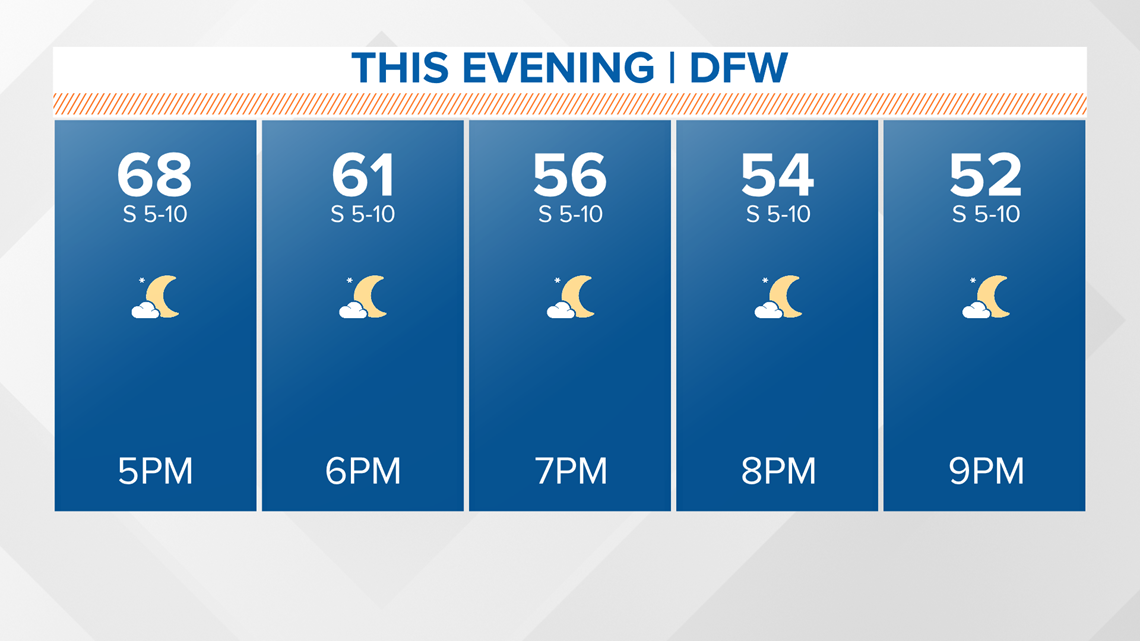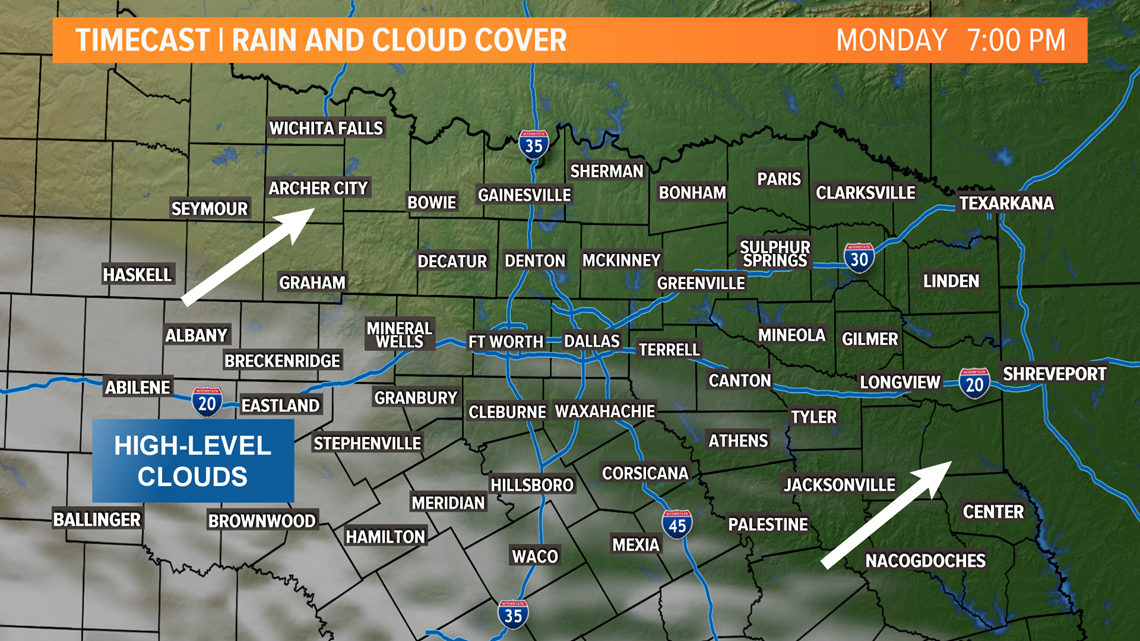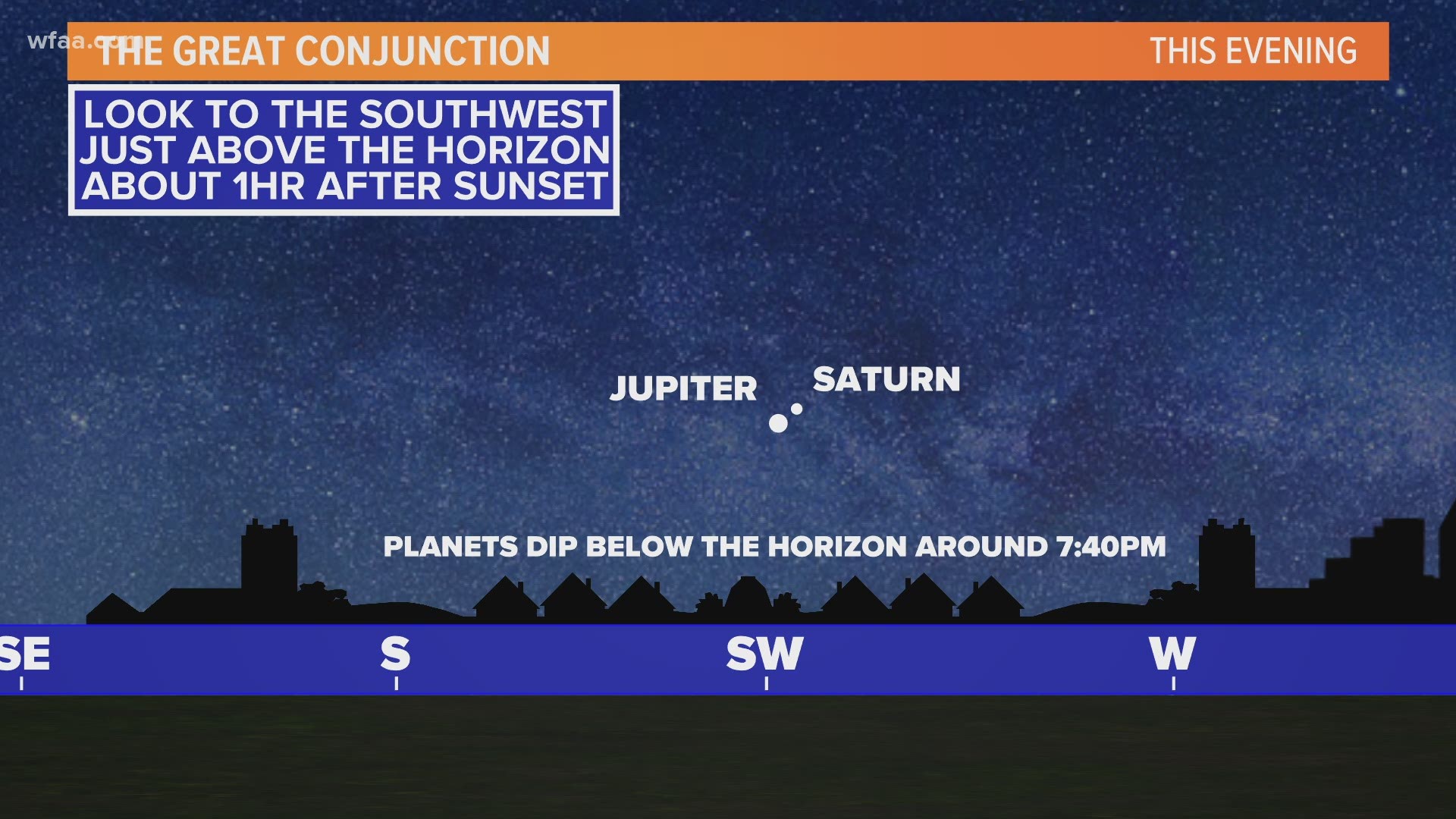The "great conjunction" peaks this evening, so what will viewing look like in North Texas?
Timing
Sunset is around 5:23 p.m., so you have to wait for it to get dark for the best viewing of the "great conjunction." That will happen around an hour after sunset, but you may be able to see it before then.
Also the farther you get outside of the city lights, the better.
You definitely want to get out and look as early as you can, because the planets will be setting in the night sky. They will dip below the horizon around 7:40 p.m., so if you wait until after then you will not see anything.
Where to look
Look to the southwest sky not terribly high above the horizon. Jupiter and Saturn will look like one bright star or two stars very close to each other.
If you have a pair of binoculars, that may help you distinguish between the two planets.
Weather
No rain is expected and temps will be in the 60s to 50s during the evening.


However, there is reason to be concerned about some passing high-level clouds. These clouds will be thin and mainly across southern areas of North Texas, but any clouds could obstruct viewing.


Areas south of the Dallas-Fort Worth area may have to contend with some clouds. So even if the Dallas-Fort Worth area is clear overhead, clouds to the southwest could cause problems.
Hopefully, the clouds stay well to the south or are very thin, so most places are able to get a good viewing.

